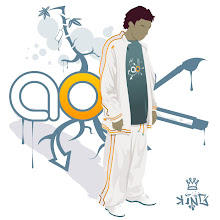In recent years, many companies have expanded globally. They have done this through mergers, joint ventures and co-operation with foreign companies. Because of globalization trend, many more 5 employees are working abroad in managerial positions or as part of multicultural team. Although it is common nowadays for staff to work abroad to gain experience, many people have difficulty adapting to the culture. The failure in US multinationals is estimated to be as high as 30% and it costs US business $3billion a year.
Two typical failures have been describes in the Management Today. The first example concerns a German Manager with IBM who took up a position product manager in England. He found that at most lunchtime and especially on Fridays, many members of staff went to the pub. ‘I stopped that right away, ‘he says. ‘Now they are not allowed off the premises. It didn’t make me very popular at the time but it not good for efficiency. There is no way we would do that in Germany. No way.’
The second example is about an American manager who came to France on a management assignment. He was unable to win the trust og his staff although he tried all kinds of ways to do so. He set clear goals, worked longer hours than everybody, participated in all projects, visited people’s offices and even took employees out to lunch one by one. But nothing seemed to work. This was because the staff believed strongly that management were trying to exploit them.
The German manager’s mistake was that he hadn’t foreseen the cultural differences. IBM had firm rule about drinking during working hours. It was not allowed. He didn’t understand that staff in other countries might be more flexible in applying rule.
The American manager used the ways he was familiar with to gain the staff’s trust. To them, he seemed more interested in getting the job done than in developing personal relationships. By walking around and visiting everyone in their offices, perhaps he gave the impression that he was ‘checking up’ on staff. His managerial approach strengthened their feeling of exploitation.
When managers work in foreign countries, that may find it difficult to understand the behaviour of their employees. Moreover, they may find that the techniques which worked at home are not effective in their new workplace.
Sources: Market Leader
Critical Thinking
Critical thinking means correct thinking in the pursuit of relevant and reliable knowledge about the world. Another way to describe it is reasonable, reflective, responsible, and skilful thinking that is focused on deciding what to believe or do. A person who thinks critically can ask appropriate questions, gather relevant information, efficiently and creatively sort through this information, reason logically from this information, and come to reliable and trustworthy conclusions about the word that enable to live and act successfully in it. Critical thinking is not being able to process information well enough to know to stop for red lights or whether you received to correct change at the supermarket. Such low-order thinking, critical and useful though it may be, is sufficient only for personal survival; most individuals master this. True critical thinking is higher-order thinking, enabling a person to, for example, responsibly judge between political candidates, serve on a murder trial jury, evaluate society’s need for nuclear power plants, and assess the consequences of global warming. Critical thinking enable an individual to be a responsible citizen who contributes to society, and not be merely a consumer of society’s distractions.
When you are thinking critically, you are not just thinking passively and accepting everything you see and hear. You are thinking actively. You are asking questions about what you see and hear, evaluating, categorising, and finding relationships.
Some critical thinking activities are listed below:
SOME OF THE ACTIVITIES INVOLVED IN CRITICAL THINKING:
Asking question
Analysing
Categorising
Comparing and contrasting
Describing
Establishing cause and effect
Evaluating
Identifying problems and solutions
Interpreting according to a framework
Making a claim and supporting it
Making links between ideas
Predicting
Relating theory to practice
Synthesising
Using appropriate evidence
When you are thinking critically, you are not just thinking passively and accepting everything you see and hear. You are thinking actively. You are asking questions about what you see and hear, evaluating, categorising, and finding relationships.
Some critical thinking activities are listed below:
SOME OF THE ACTIVITIES INVOLVED IN CRITICAL THINKING:
Asking question
Analysing
Categorising
Comparing and contrasting
Describing
Establishing cause and effect
Evaluating
Identifying problems and solutions
Interpreting according to a framework
Making a claim and supporting it
Making links between ideas
Predicting
Relating theory to practice
Synthesising
Using appropriate evidence
Labels:
critical thinking,
education,
learning,
student,
university
Subscribe to:
Posts (Atom)

